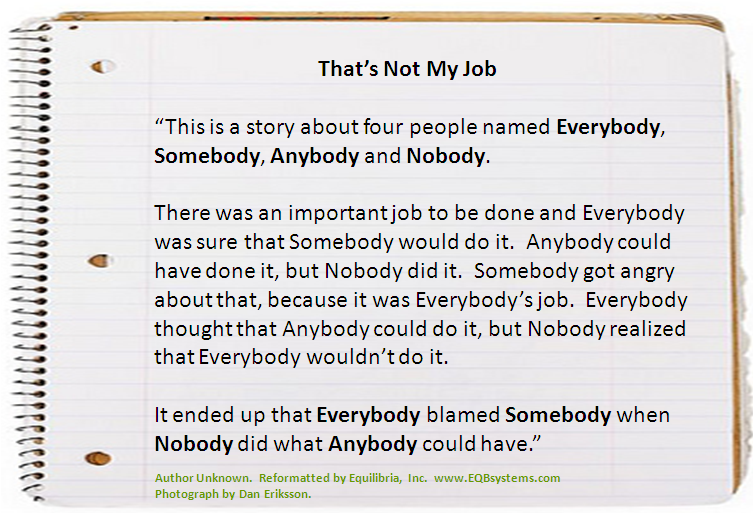No, this is not a medical post. However, paralysis, amnesia and megalomania are also conditions and/or behaviors that can contribute to unsuccessful projects. Oftentimes people attribute blown budgets and missed deadlines to projects that involve robust or sophisticated technology. But the reality is that human beings are the single factor that ultimately ensures a project’s success or demise. So that’s the focus of this post – a discussion on some of the human inhibitors of project management and possible tools that can be put in place to mitigate or hopefully prevent these inhibitors from happening altogether.
My personal journey in project management began at my first job out of college. I was an impressionable Chemical Process Engineer assigned as the lead on a project involving a cross-functional team of Engineers, Chemists, Accountants and Operators. It seemed no one would cooperate – my biggest obstacle was not in getting the team members to share information or work with me; rather, it was in getting them to cooperate and share information with each other. Frustrated, I recall going to my then Boss’ office and venting. I expected him to not only give me a pep talk but to also give me solid, step-by-step instructions for handling this situation. Instead, he responded by handing me a photocopy of the following poem:
“Wow!” I remember thinking to myself. This poem spoke volumes about the dynamics of my team. My Boss went on to explain that I would have to figure out how to capitalize on my natural “people” skills to navigate this difficult situation because, he assured me, it would not be the last time I would encounter this type of situation. Since then, I have worked on scores of projects of various sizes with just about every personality type imaginable. As a result, I’ve identified what I consider to be the three most debilitating human conditions and/or behaviors commonly encountered in project management.
Paralysis
 Project paralysis can occur when a team member would rather do nothing or wait for the unnecessary approval of others rather than do anything and run the risk of making a mistake. People like this either fear potential reprimand or the fact that something could go horribly wrong or maybe even both. In either case, this team member needs to feel assured that there are checks and balances in place so that future potential blame will not be placed on just him/her. Perhaps more frightening is when project paralysis develops as a result of a team member not having access to the information needed to complete a task. When certain team members are excluded from key conversations, trainings, etc., it is only natural for feelings of indifference to surface. And an indifferent team member can also, whether intentional or not, sabotage the project’s success.
Project paralysis can occur when a team member would rather do nothing or wait for the unnecessary approval of others rather than do anything and run the risk of making a mistake. People like this either fear potential reprimand or the fact that something could go horribly wrong or maybe even both. In either case, this team member needs to feel assured that there are checks and balances in place so that future potential blame will not be placed on just him/her. Perhaps more frightening is when project paralysis develops as a result of a team member not having access to the information needed to complete a task. When certain team members are excluded from key conversations, trainings, etc., it is only natural for feelings of indifference to surface. And an indifferent team member can also, whether intentional or not, sabotage the project’s success.
Amnesia
 Amnesia occurs when a team member claims to not remember (maybe conveniently) key points pertaining to the project. Specifically, amnesia occurs when a team member: 1) verbalizes one thing, yet does another and claims forgetfulness, 2) rushes to get certain things done without appropriate consent/approval and later tries to deflect or place blame on someone else for not providing quality assurance and 3) does not participate in certain decision-making discussions citing that s/he is not privy to the information needed to solve the issues at hand. Whether the amnesia is convenient or real, it prevents team member accountability and therefore hinders project progress.
Amnesia occurs when a team member claims to not remember (maybe conveniently) key points pertaining to the project. Specifically, amnesia occurs when a team member: 1) verbalizes one thing, yet does another and claims forgetfulness, 2) rushes to get certain things done without appropriate consent/approval and later tries to deflect or place blame on someone else for not providing quality assurance and 3) does not participate in certain decision-making discussions citing that s/he is not privy to the information needed to solve the issues at hand. Whether the amnesia is convenient or real, it prevents team member accountability and therefore hinders project progress.
Megalomania
 Megalomania occurs when a particular team member (knowingly or unknowingly) instills fear and intimidation in other team members. A megalomaniac’s bully-like behavior destroys effective team communication and is probably the worst human condition your team could be plagued with. This type of team member has a delusional need for power which can cause him/her to act as a saboteur or double-agent – all in a quest to receive the most recognition or highest accolade. And of course, this team member wants all or most of the credit when things go well and accepts no responsibility when things go wrong or are incorrect. Megalomaniacs rarely respect boundaries and their real intentions can go undetected for a while to the untrained eye. The day when another team member rebels against the megalomaniac team member is the day your project could be in serious jeopardy.
Megalomania occurs when a particular team member (knowingly or unknowingly) instills fear and intimidation in other team members. A megalomaniac’s bully-like behavior destroys effective team communication and is probably the worst human condition your team could be plagued with. This type of team member has a delusional need for power which can cause him/her to act as a saboteur or double-agent – all in a quest to receive the most recognition or highest accolade. And of course, this team member wants all or most of the credit when things go well and accepts no responsibility when things go wrong or are incorrect. Megalomaniacs rarely respect boundaries and their real intentions can go undetected for a while to the untrained eye. The day when another team member rebels against the megalomaniac team member is the day your project could be in serious jeopardy.
Here’s a proven methodology that you can use to minimize the effects that paralysis, amenesia and megalomania can have on your project:
1. Task Analysis. When starting any project, you need to first figure out what needs to be done, who should do it and how it is organized into functional areas. This MUST be figured out in the beginning. Document this as part of the project’s scope and strategy and distribute to all team members. Have each team member sign off acknowledging his/her receipt of the project strategy. Provide a written commitment to share all project milestones, updates and budget reports to the entire team. Having traceable proof of these communications is key to protecting yourself against claims of amnesia.
2. Project Design. Once you’ve determined who will do what, you should then develop a chain of communication. This is different from a chain of command which typically has a hierarchical structure. As Project Manager, your job is to encourage and facilitate ongoing communication amongst all team members. Providing a schematic (i.e., organization chart) can help team members visualize how their subject matter expertise specifically adds to the overall team thereby giving them the incentive to not allow paralysis to prevent them from acting and completing tasks. Having a documented structure can also keep the megalomaniacs at bay as it can serve as a constant reminder of the management boundaries.
3. Records Management. Write EVERYTHING down! Implement a process to document and share all meeting agendas, meeting notes, key findings, pending action items, etc. Effective note taking keeps everyone on the same page and storing it in an electronic repository ensures every team member has access to the information needed to be successful in executing his/her portion of the overall project.
4. Workspace Logistics. In the Digital Age, it’s no surprise that more teams are working virtually. Knowing the physical or geographic location of your team members is critical to ensuring smooth information flow especially since it could mean a heavy reliance on communication technologies. Long distances may prevent you from meeting face-to-face with your team members creating the need for phone calls which in turn require an even greater time management skill.
5. Business Processes. As a final step, take the time to document the processes that your team should use for information sharing, quality assurance, reporting and troubleshooting issues, and testing and approval. All of these are necessary to keep people on task and create the consistency needed to keep the project moving forward.
Remember, you will not always have the luxury of selecting the members of your project’s team. As such, you may find yourself having to become somewhat of a chameleon that can champion the cause of each team member without sacrificing project quality. Be authoritative without being over-bearing. Be firm without ruling with an iron fist. And last, be fair without being a push-over.
Do you have any project nightmares that were caused by people issues? If so, how were you able to solve them? Please leave a comment and share your story.












